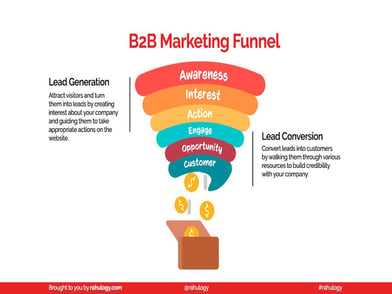Today I want to share something near and dear to my heart: the art of making introductions. This isn’t just any introduction—this is about crafting thoughtful, effective introductions that can open doors, foster new relationships, and even facilitate significant business deals. Whether you're a seasoned networker or just starting out, there's value here for everyone.
Understanding the Importance of a Good Introduction
Introductions are often misunderstood and undervalued. At a high level, an introduction sounds simple: bring two people together and let them get acquainted. But in reality, a lot more goes into making an introduction effective.
Think about it—an introduction requires two people who may or may not know each other. You, as the facilitator, must convey enough context and relevance for this meeting to be beneficial to both parties. A poorly handled introduction can waste people’s time, or worse, damage professional relationships.
So how do we make introductions that stand out?
Breaking Down the Introduction Process
I break down the introduction process into levels, each progressively more refined and effective.
- Level Zero: The Bare Minimum
At level zero, you’re simply putting two people in touch. This could be as easy as sending a mutual introduction email saying, “Hey, you two should meet!” While this approach is fast, it often leaves both parties wondering why they should be interested. This level is rarely effective and should be used only when you're sure both parties already know the significance of the introduction.
- Level One: Adding Context
This is where things start getting interesting. At level one, you add more context to your introductions. You provide some background, why these two individuals should connect, and what's in it for them. This helps both parties understand the value of the introduction right off the bat, making the meeting more likely to be fruitful.
For instance, if you’re introducing two potential business partners, you might include information about each other's business and how a partnership could be mutually beneficial.
- Level Two: Introduction Offers
Here’s where you take a step further by pre-confirming interest. You reach out to each party separately to gauge their interest in meeting each other before making the introduction. This way, you ensure that everyone is on the same page, willing, and ready to connect.
This approach requires more time and effort but significantly increases the success rate of the connections you facilitate. I often include a small bio, a LinkedIn profile, and a few compelling reasons for the introduction to make it easier for both parties to see the value right away.
- Level Three: Due Diligence and Follow-Up
This level is where you not only make the introduction but also follow up to ensure it is successful. Two weeks after the introduction, check in with both parties to see how the meeting went and what came out of it.
This way, not only do you confirm that the introduction was beneficial, but you also show that you care about the outcome, which bolsters your credibility as a facilitator. It gives you valuable feedback and insights into how you can make future introductions even more effective.
Making Introductions Sustainable
Introductions take time, effort, and often emotional energy. To make this process sustainable, especially if you frequently connect people, it’s crucial to have a system in place.
Here’s how I do it:
- Templates and Automation: Use templates for emails to ensure you’re consistently providing all relevant information. Automation tools can help send out follow-up emails, track responses, and manage scheduling.
- Executive Assistance: In my case, I have a team that assists me in managing introductions. They handle the routine tasks, such as sending emails and tracking responses, allowing me to focus on the high-value aspects of networking.
- Partnerships and Compensation: Don’t shy away from seeking compensation for introductions that lead to significant business deals. This could be in the form of commissions, fees, or other mutually beneficial arrangements. This ensures that both you and the individuals you’re introducing are getting tangible value from these connections.
The Real Value of Thoughtful Introductions
At the end of the day, a successful introduction is a win-win for everyone involved. As the facilitator, you build a reputation for connecting people effectively, which can open doors for you in the future. The individuals you introduce benefit from the new opportunities and relationships you help create.
With a well-thought-out approach, making introductions can become not just an occasional favor, but a strategically beneficial activity that enhances your networking efforts, your professional standing, and maybe even your bottom line.
Thank you for sticking with me through this deep dive into successful introductions.
To know more, check out Well Aware's first-ever Operation Teardown, How to Create Effective Business Introductions on Libsyn and Youtube.
Until next time!
-Conrad
Tags:
Well Aware PodcastJuly 12, 2024






Comments